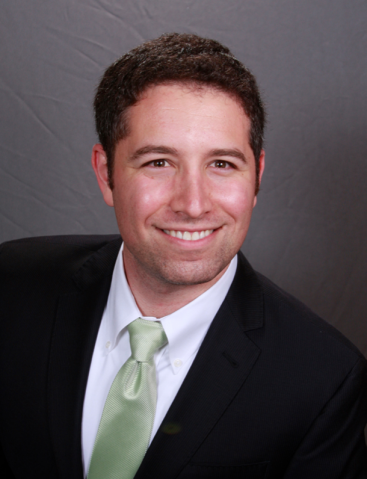While the evolving pandemic provides unique learning opportunities, it also poses numerous educational barriers. How learning is prioritized at individual institutions will vary greatly depending on the local needs of patients, providers, hospital systems, and the community. Effort explicitly devoted to learning may be proportionately reduced during a crisis, yet, even in severely affected areas, learners maintain important roles in the workplace. For example, an emergency medicine resident must triage patients with respiratory syndromes, a nephrology fellow will help initiate dialysis for a critically ill patient, and a medical student may assist an overstretched infectious disease consult team.
Even in this time of crisis, we remain obligated to teach learners and to provide strategies to help them learn. However, considering the stress the COVID-19 pandemic imposes on all stakeholders, we cannot assume that usual methods of teaching will be effective without some adjustments. Cognitive load theory (CLT), developed by John Sweller, provides an educational framework based on cognitive psychology that can inform workplace teaching and learning during the pandemic.
What is Cognitive Load Theory (CLT)?
Building upon the Atkinson-Shriffin three-mode model of human memory, CLT views the working memory’s limited capacity to manage multiple pieces of information simultaneously as the primary bottleneck for learning. Three cognitive load components impose on a learner’s working memory during a task. Intrinsic load occurs as learners complete essential elements of the task. Extraneous load occurs whenever attention is used unproductively, such as attending to distractions. Germane load occurs as learners assemble pieces of information from the working memory into “chunks”, or learning schemas, for storage in the long-term memory. When the combined amount of intrinsic and extraneous load exceeds working memory capacity, cognitive overload occurs, and capacity for germane load, which leads to learning, is limited.
How Does Cognitive Load Theory Relate to COVID-19?
Learners in clinical workplaces are at high risk of cognitive overload, and the COVID-19 pandemic compounds this risk. Constantly evolving complex information and changes to workplace practices contribute excessive intrinsic load. Increased demands on time, feelings of uncertainty and anxiety, and negative emotions related to stress introduce extraneous load. Without adjustments to work assignments and teaching practices, these factors can easily lead to cognitive overload. In addition to limiting learning, cognitive overload can harm performance and lead to negative patient outcomes. For example, consider a resident who is asked to admit a patient with a respiratory syndrome. Admitting such a patient might ordinarily be a simple task with low intrinsic load. However, the intrinsic load associated with admitting this patient will now be increased due to the additional steps of including COVID-19 in the differential diagnosis and considering COVID-19 related complications. The extraneous load may be elevated by personal protective equipment requirements, anxiety about contracting the coronavirus, and keeping track of current workflows and protocols for coronavirus testing. If these factors overwhelm the working memory, no capacity for germane load will remain and performance and learning may suffer. The resident may have wanted to learn about pulmonary findings in patients with COVID-19, but cognitive overload may prevent such learning. In his overwhelmed state, the resident may forget to order deep venous thrombosis prophylaxis, resulting in patient harm. Essentially, the resident is working harder and under greater stress, to the detriment of the resident’s learning and, potentially, patient care.
What are Some Practical Suggestions for Clinical Teachers?
While CLT helps us understand some educational barriers caused by the COVID-19 pandemic, it also offers principles to improve teaching and learning. Teaching strategies should aim to optimize intrinsic load for the level of the learner, to minimize extraneous load, and to promote germane load. A recent scoping review summarized best practices to achieve these goals within clinical workplaces. We propose adapting these evidence-based strategies to promote clinical learning as we continue to navigate the COVID-19 pandemic, as shown in the Table and explicated below.
To optimize intrinsic load, teachers should assign simpler or partial tasks, especially to early learners, reserving complex tasks for advanced learners or supervisors. For example, a medical student on an inpatient internal medicine subinternship can be assigned patients with straightforward medical conditions to allow more senior team members to care for patients of higher complexity. If early learners must take on complex tasks, teachers should help them to separate whole tasks into manageable subtasks, using checklists to track progress.
To minimize extraneous load, teachers should foster a learning environment in which learners feel comfortable expressing feelings of cognitive overload, anxiety, worry or fatigue. Teachers should observe learners, check in periodically, and ask about the challenges learners face. For example, an attending working with a medical student during the coronavirus pandemic should monitor the student’s body language for signs of fatigue and ask how the student is handling the extra stress of the pandemic. Giving learners a language, space, and the psychological safety needed to express their concerns will help learners focus on the task at hand. Additionally, schools should familiarize learners with available mental health resources.
To promote germane load, teachers should encourage learners to focus on particular elements of a complex task with the express purpose of improving. For example, a resident in a busy emergency department may desire to improve her intubation technique, but the attending may be unavailable for direct supervision. The attending can coach the resident to reflect on a specific aspect of the procedure she would like to improve upon and to focus her attention there during multiple intubations. Then, when time allows, the resident can debrief her learning experience with the attending. Additionally, the attending can reassure the resident that, given the circumstances, performing the procedure safely without an explicit focus on learning may be appropriate when urgent service needs are overwhelming.
What Can We Conclude?
The COVID-19 pandemic has strained all aspects of healthcare and medical education. As we continue to grapple with this evolving threat, educators and clinician teachers must strive not only to care for our patients to promote health and reduce morbidity and mortality, but also to train and inspire future generations of healthcare providers to do the same. At the same time, we must acknowledge that this pandemic poses very real barriers that affect both patient care and education. We propose that a deliberate approach informed by CLT may help mitigate the cognitive load that COVID-19 imposes and promote learning even in these unprecedented times. This approach may apply more broadly to learning during current and future public health threats, infectious and otherwise.
What will you do to use CLT to inform workplace teaching and learning as we continue to navigate the pandemic? Comment below to join the conversation!
Table: Practical suggestions for educators and clinician teachers to facilitate learning during the coronavirus pandemic
|
Practical Suggestion* |
Effect on Learner Cognitive Load |
||
|
Optimize Intrinsic Load† |
Reduce Extraneous Load† |
Promote Germane Load† |
|
|
Assign simple or partial tasks to early learners |
√ |
|
|
|
Scaffold complex tasks into simpler steps |
√ |
|
|
|
Faculty take over tasks completely from learners if task is overly complex or workload necessitates |
√ |
√ |
|
|
Use checklists, automated order sets, and standard protocols for common, higher-risk diagnoses such as undifferentiated respiratory illness or confirmed COVID-19 |
√ |
√ |
|
|
Monitor learner body language and speech for cognitive overload and fatigue; provide support |
|
√ |
|
|
Provide faculty development in crisis management with a focus on learner emotions |
|
√ |
|
|
Debrief crisis situations with learners to facilitate reflection and provide support services |
|
√ |
|
|
Provide a psychologically safe space for learners to express and discuss emotions |
|
√ |
|
|
Modify workspace and workflows to improve efficiency and reduce distractions |
|
√ |
|
|
Ensure learners and faculty have adequate personal protective equipment and training |
|
√ |
|
|
Ensure hospital policies and procedures such as universal masking and reuse of personal protective equipment are clear to learners |
|
√ |
|
|
Orient learners to technology, both in the workplace and when used for remote learning |
|
√ |
|
|
Debrief with learners regarding the challenges they face in clinical or remote work environments |
|
√ |
|
|
Encourage learners to deprioritize distractions; mindfulness techniques may be helpful |
|
√ |
|
|
For remote learners, elicit and acknowledge emotions such as feelings of isolation, and provide support |
|
√ |
|
|
Teach learners to communicate feelings of cognitive overload |
|
√ |
√ |
|
Reassure learners that focusing on task completion rather than learning may be appropriate when the situation is overwhelming |
|
√ |
√ |
|
Provide faculty development specific to teaching learners during the coronavirus pandemic |
|
|
√ |
|
Minimize competing duties for teaching faculty to facilitate maximal engagement |
|
|
√ |
|
Advise learners who are assigned complex or urgent tasks or procedures to focus learning on a single element of the task or procedure |
|
|
√ |
*We recommend prioritizing interventions that optimize intrinsic load and minimize extraneous load. These steps will help preserve working memory capacity for activities that promote germane load.
†Intrinsic load is working memory capacity devoted to the essential elements of completing a task. Extraneous load is working memory capacity used unproductively, such as attending to distractions, during a task. Germane load is working memory capacity used to create and refine learning schemas that store information in long-term memory (i.e., learning).
Did you know that the Harvard Macy Institute Community Blog has had more than 280 posts? Previous blog posts have explored topics including supporting students and faculty through the application of learning sciences, retrieval-based learning, and mastering adaptive teaching in the midst of COVID-19.
Author BIOS

Sam Brondfield, MD, MAEd, (PGME ’18, Educators ’20) is a hospital-based oncologist and medical educator. Sam currently holds a position as Assistant Clinical Professor at the University of California, San Francisco. Sam’s areas of professional interest include cognitive load, asynchronous learning, and subspecialty training. Sam can be followed on Twitter or contacted via email.

Justin Sewell, MD, PhD, is a gastroenterologist and medical educator. Justin currently holds a position as Professor of Medicine at the University of California, San Francisco. Justin’s areas of professional interest include cognitive load theory, procedural skills training, and workplace teaching. Justin can be followed on Twitter or contacted via email.

Peter Chin-Hong, MD, (Leaders ‘16, Educators ’18, Systems ’19) is an infectious disease physician and medical educator. Peter currently holds a position as Professor and Associate Dean for Regional Campuses at the University of California, San Francisco. Peter’s areas of professional interest include transplant infectious diseases, COVID-19, and workforce development. Peter can be followed on Twitter or contacted via email.
HMI Staff


